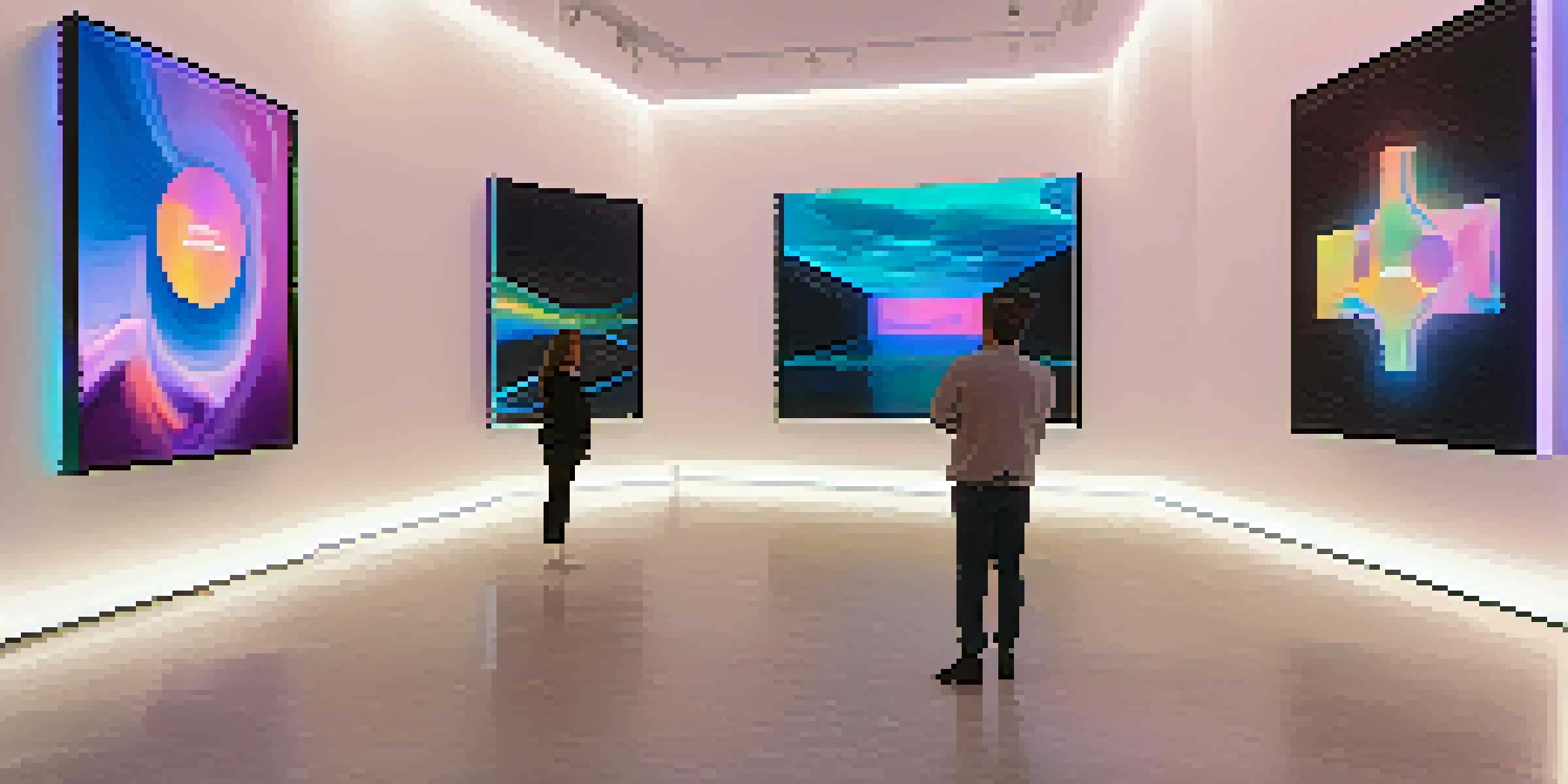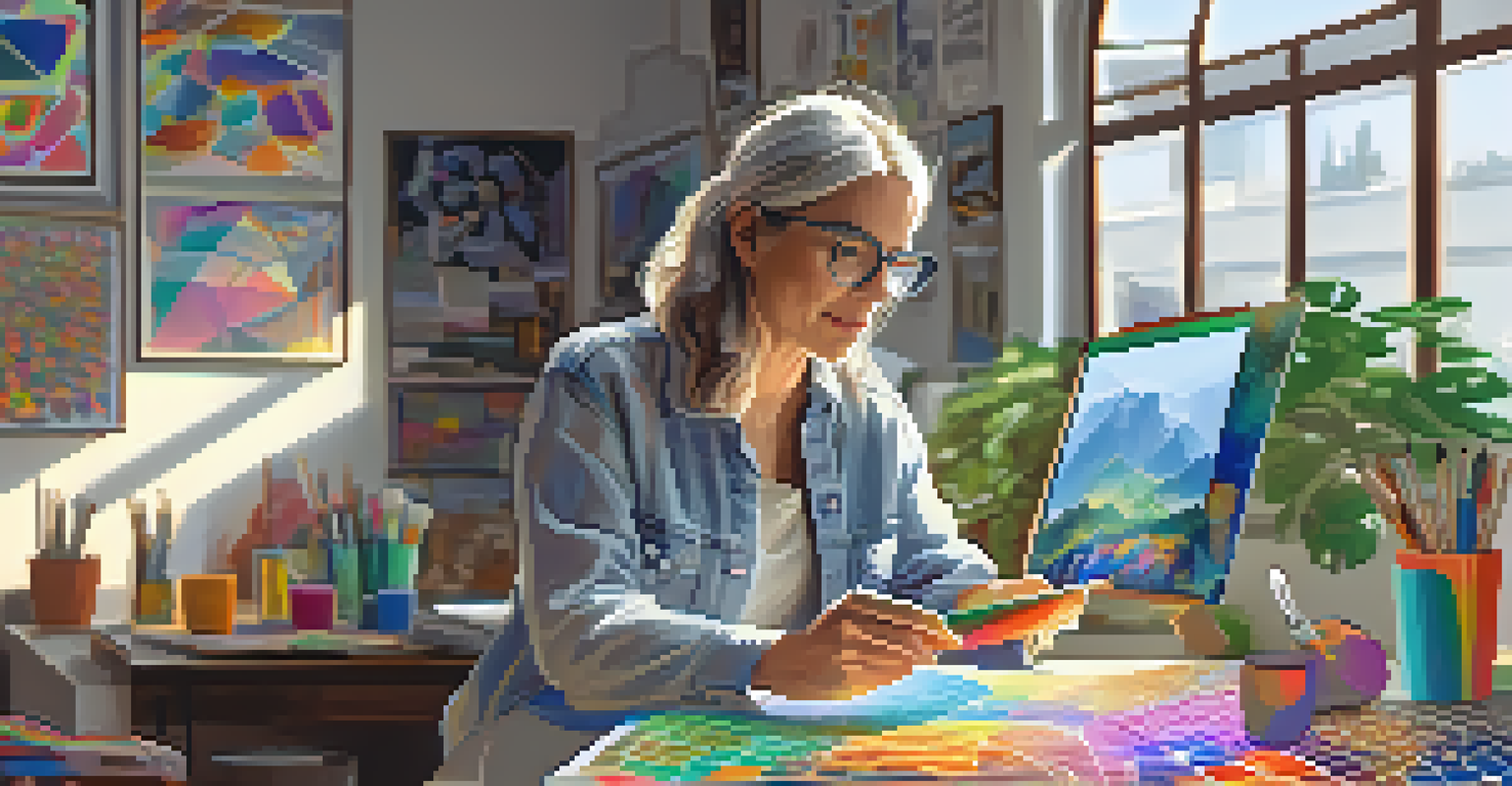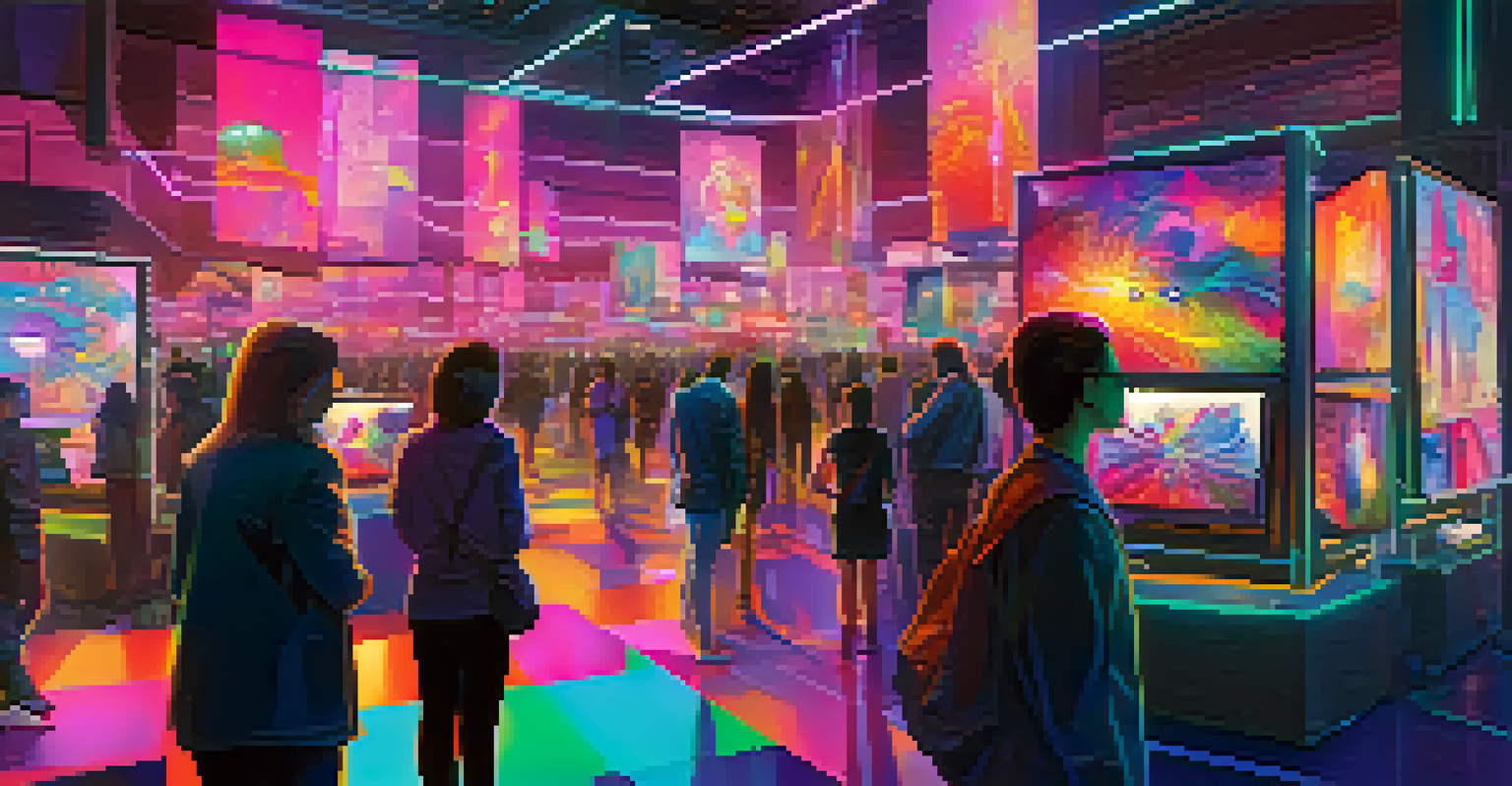Exploring How Cryptocurrency is Shaping the Art Market Today

Understanding Cryptocurrency in the Art World
Cryptocurrency, a digital form of currency, is changing how art is bought and sold. Unlike traditional currency, it operates on a decentralized network, allowing for secure and anonymous transactions. This technology has opened new doors for artists and collectors, making the art market more accessible than ever before.
Art is not freedom from discipline but disciplined freedom.
As artists embrace cryptocurrency, they can receive payments directly without intermediaries. This means they keep a more significant share of the profits and can quickly reinvest in their work. Additionally, the ease of international transactions helps artists reach a global audience, breaking geographical barriers.
However, understanding cryptocurrency can be daunting for newcomers to the art scene. Many artists and collectors are still learning how to navigate this digital landscape. Education and awareness are key to ensuring that everyone can benefit from these innovations in the art market.
NFTs: The New Frontier in Art Ownership
Non-fungible tokens (NFTs) have emerged as a groundbreaking application of cryptocurrency in the art world. An NFT is a unique digital asset that represents ownership of a specific item, such as a piece of digital art. This technology allows artists to tokenize their work, giving them control over its provenance and resale.

NFTs have not only changed how artists sell their creations but also how collectors purchase and display art. Digital galleries and virtual exhibitions are becoming increasingly popular as collectors showcase their NFTs. This shift is democratizing art ownership, allowing anyone with access to the internet to participate in the art market.
Cryptocurrency Transforms Art Sales
Cryptocurrency allows artists to sell directly to buyers, increasing their profits and expanding their global reach.
Despite the excitement, there are concerns about the environmental impact of NFTs, as the blockchain technology that supports them can consume significant energy. As the conversation around sustainability grows, artists and collectors alike are seeking eco-friendly alternatives to ensure the future of art remains viable.
The Rise of Decentralized Marketplaces
Decentralized marketplaces are revolutionizing how art is bought and sold by eliminating traditional gatekeepers. These platforms allow artists to sell their work directly to buyers, often at lower fees than traditional galleries. This shift empowers artists and fosters a sense of community among creators and collectors.
The best way to predict the future is to create it.
In these decentralized environments, transactions are transparent and verifiable, building trust between parties. Blockchain technology ensures that each sale is recorded, providing a clear history of ownership. This transparency can help reduce fraud and protect artists' rights in an industry that has been plagued by issues of authenticity.
Furthermore, these marketplaces often enable artists to collaborate and engage with their audiences in new ways. Whether through interactive exhibitions or community-driven projects, blockchain technology encourages creativity and innovation in the art world.
Challenges and Criticisms of Cryptocurrency in Art
While cryptocurrency and NFTs present exciting opportunities, they also come with challenges. One of the primary concerns is volatility; the value of cryptocurrencies can fluctuate dramatically, making it risky for artists and collectors alike. This unpredictability can complicate financial planning for artists relying on digital sales.
Additionally, there are ongoing concerns about the security of cryptocurrency transactions. While blockchain technology is designed to be secure, scams and hacks have become prevalent, leaving some artists and collectors wary of adopting these new methods. Building a secure framework for digital transactions is crucial for the long-term success of cryptocurrency in the art market.
NFTs Redefine Art Ownership
Non-fungible tokens (NFTs) enable artists to control the provenance of their work, democratizing art ownership and access.
Lastly, there remains a digital divide that can exclude less tech-savvy artists and collectors from fully engaging with this new landscape. Ensuring equitable access to education and resources will be vital in making the art market inclusive for everyone.
How Artists are Adapting to the Digital Shift
Many artists are embracing the digital shift, using cryptocurrency and NFTs to expand their creative possibilities. They are experimenting with new forms of art, such as generative art and interactive installations, that can only exist in a digital format. This evolution is pushing the boundaries of what art can be and how it can be experienced.
Social media platforms have become essential tools for artists to promote their digital works and connect with collectors. Artists can share their creative processes, engage with their audiences, and build a following that supports their endeavors. This direct interaction has changed the traditional artist-collector relationship, fostering collaboration and community.
Moreover, artists are using technology to tell stories about their work in innovative ways. Through augmented reality and virtual reality, they can create immersive experiences that engage viewers beyond the physical artwork. As technology continues to evolve, artists will find new ways to express themselves and reach wider audiences.
The Future of Cryptocurrency in the Art Market
As we look to the future, the intersection of cryptocurrency and the art market promises to evolve further. Trends indicate that more artists will adopt digital currencies, while galleries and auction houses will increasingly incorporate NFTs into their offerings. This integration will likely redefine how we perceive art ownership and value.
Additionally, we may see a rise in partnerships between traditional institutions and blockchain startups. These collaborations could bring greater legitimacy to cryptocurrency in the art world, making it more appealing to mainstream collectors. By bridging the gap between the physical and digital realms, the art market can flourish in new, innovative ways.
Challenges of Digital Transactions
Despite the benefits, volatility and security concerns in cryptocurrency transactions pose significant risks for artists and collectors.
Ultimately, the future will hinge on how well artists, collectors, and institutions adapt to these changes. As the art market embraces technological advancements, the possibilities for creativity, engagement, and accessibility are boundless.
Conclusion: Embracing Change in the Art World
Cryptocurrency is undeniably shaping the art market, providing new avenues for creativity, connection, and commerce. As artists and collectors navigate this evolving landscape, the importance of education and community cannot be overstated. Everyone involved must stay informed and engaged to fully embrace the opportunities that lie ahead.
While challenges remain, the potential for positive change is immense. By fostering a culture of collaboration and innovation, the art market can evolve in ways that benefit all stakeholders. Embracing this digital shift can create a more inclusive and diverse environment for artists and collectors alike.

In conclusion, the art world is on the brink of a transformation driven by cryptocurrency. By remaining open to change and exploring new possibilities, we can all play a part in shaping the future of art.